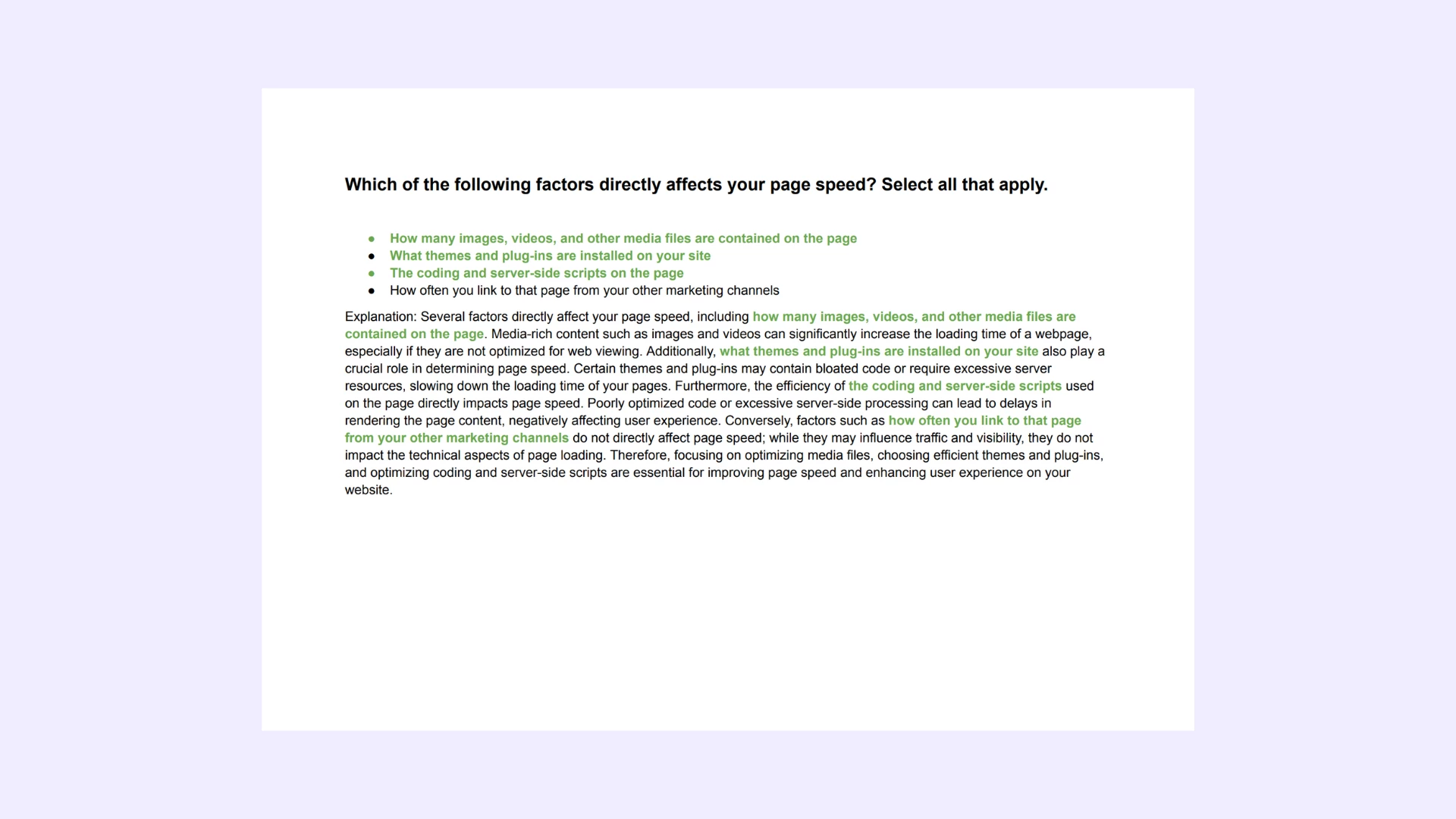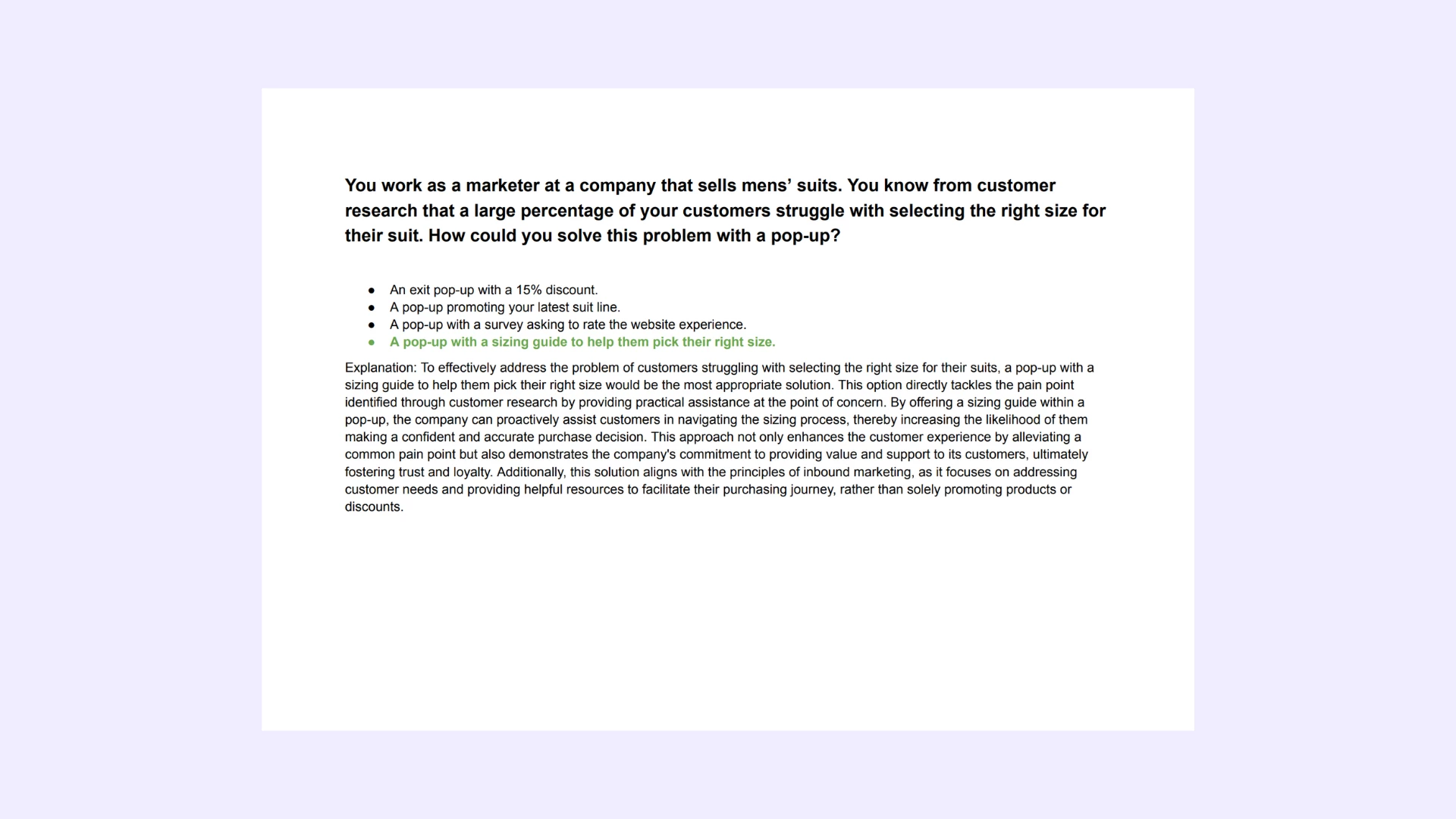What is the drawback to using the last touch attribution model?
This model would show low-value touches (like email clicks) equal to high-value conversion activities (like demo requests).
This model makes it difficult to justify your team's impact on your company's bottom line.
This model lacks the ability to recognize actions that occurred outside a certain window of time.
This model ignores potentially influential interactions that occurred on the path to purchase.

HubSpot Roll. Includes Answers for Every Real HubSpot Certification Exam.
All-in-One: Get all HubSpot exams answers with explanations in one bundle. This package includes answers for every current HubSpot certification. Regular updates to reflect the latest exam version. -> See what's included.


Need a single cerification exam answers? Check out our -> list of certification exams answer keys. Learn Smarter. Obtain or Renew your certificates with peace of mind!
Explanation: What is the drawback to using the last touch attribution model?
Explanation: **This model ignores potentially influential interactions that occurred on the path to purchase.** The last touch attribution model assigns all the credit for a conversion to the last touchpoint a customer interacted with before converting. While this approach provides a straightforward way to attribute conversions, it overlooks the entire customer journey leading up to the conversion. In today's multi-channel and multi-touchpoint marketing landscape, customers often engage with various touchpoints before making a purchase decision. Ignoring these earlier interactions can lead to a skewed understanding of the customer journey and the effectiveness of different marketing channels. As a result, relying solely on last touch attribution may undervalue the impact of certain marketing efforts and misguide resource allocation decisions.

Special Bundle Offer HubSpot Roll. All in One
Note: We conduct daily checks for updates on the exam, ensuring that the file contains the most recent questions from the actual certification program.
Questions | Answers | Explanations. FREE Updates.
You may also be interested:
- Special HubSpot bundle offer - all HubSpot exams in one
- HubSpot CMS for develpers certification exam answers
- HubSpot CMS for develpers II certification exam answers
- HubSpot content hub for marketers certification exam answers
- HubSpot content marketing certification exam answers
- HubSpot contextual marketing certification exam answers
- HubSpot digital advertising certification exam answers
- HubSpot digital marketing certification exam answers
- HubSpot email marketing certification exam answers
- HubSpot frictionless sales certification exam answers
- HubSpot growth driven design certification exam answers
- HubSpot inbound certification exam answers
- HubSpot inbound marketing certification exam answers
- HubSpot inbound marketing optimization certification exam answers
- HubSpot inbound sales certification exam answers
- HubSpot integrating with HubSpot I foundations certification exam answers
- HubSpot marketing hub software certification exam answers
- HubSpot reporting certification exam answers
- HubSpot revenue operations certification exam answers
- HubSpot sales enablement certification exam answers
- HubSpot sales hub software certification exam answers
- HubSpot sales management certification exam answers
- HubSpot sales software certification exam answers
- HubSpot seo certification exam answers
- HubSpot seo II certification exam answers
- HubSpot service hub software certification exam answers
- HubSpot social media marketing certification exam answers
- HubSpot social media marketing II certification exam answers